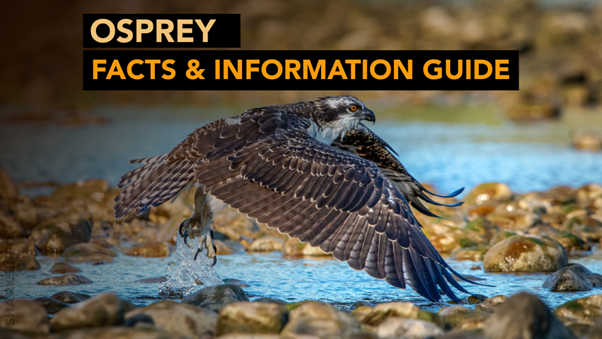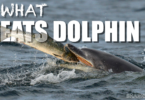Osprey, scientifically known as Pandion haliaetus, is commonly known as the sea hawk, fish hawk, or river hawk. These species belong to class Aves and the family Pandionidae. The osprey exhibits a variety of habitats and is mostly found near water bodies because of the abundant food supply. There is much more about the species that need exploration.
What Is The Geographical Distribution Of Osprey?
In the class Aves, the osprey is the widest in distribution. The distribution of these species ranges from Alaska to Baja California, along the coastal region of Florida, the Atlantic Ocean, New Jersey, North and South America, Venezuela, Brazil, and along the Amazon River. They are found living usually around water bodies and nest approximately within a range of 3 to 5 km.

What Is The Physical Appearance Of Osprey?
Osprey is a large predatory bird that has a white head with a dark brown band on it, which looks like a brown feathering crown. The height of an Osprey is around 55 to 58 cm and it weighs approximately 1,200 to 2,000 grams. They have long wings of about 158 cm which cover the entire body helping them to fly to a high altitude of 70 meters or above. The feet of the osprey are long and curved, with small spines, providing a grip on prey.

What Is The Feeding Habitat Of The Osprey?
Osprey is an opportunistic feeder which includes medium-sized fishes in its diet such as shad, perch, and menhaden. They usually hunt prey by sighting them from an extreme height, then beat their wings on the water’s surface and capture the prey with their spiny feet. After catching, they fly back, rearrange the prey and engulf the prey while flying.

How Does Osprey Reproduce?
The breeding period of osprey starts in February or March. These species built large nests where mating rituals are performed. The nest is built near the water bodies like dead snags, channel markers, and utility poles. Between April and May, the female lays eggs, 3 eggs per season. The gestation period lasts for about 38 to 42 days, after that the eggs hatch, and the chicks arrive in the new world. Just after 55 days of hatching the young take their first flight by flaunting their wings in the air. These species reach sexual maturity after 3 years and have an average life span of 25 years for males and 23 years for females.
What Is The Conservation Status Of The Osprey?
Since 1974, the population of osprey has declined at an alarming rate and is thus considered an endangered species by the New Jersey Division of Fish & Wildlife 1974. After that, the population of osprey has been recovered by creating artificial nest structures near the coastal regions and transferring the eggs from one locality to the other. Today, there are approximately 600 nesting pairs of ospreys found. However, IUCN enlisted these species as Least Concern in the Red list.

Interesting Facts About Osprey
Some of the unknown and interesting facts about osprey are enlisted below:
- The word Osprey has a Latin origin which means a bird of prey.
- Osprey is a member of Aves that have a wide range of distribution.
- Osprey is found all over the globe except in the Antarctica region.
- On average, they can travel about 160,000 miles throughout their life.
- They can catch prey under the water in just 12 minutes.
- They have long and sharp talons which allow them to grab the prey with their feet.
- They feed on prey which keeps them hydrated, which is why they do not need to drink water.
- The longest specimen of osprey lived for 35 years.
- The eggs of the osprey do not hatch altogether, they have a gap of 5 days after one hatch.
- The nest of osprey is about 5 feet long and 2 feet deep.
Final Thought
Osprey is commonly named sea hawk, fish hawk, or river hawk, which are widely spread over the globe except in the Antarctica region. They have an average length of 55 to 58 cm and approximately 1,200 to 2,000 grams weigh. These species only include fishes in their diet which keep them hydrated all the time. Moreover, the osprey gives rise to only 3 chicks in a single breeding season. However, their population went almost extinct but has been recovered successfully and now they have been enlisted as Least Concern by IUCN.







